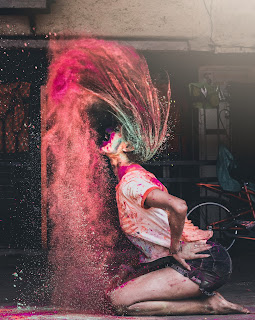Festivals of India: A Kaleidoscope of Colors, Tradition, and Celebration
India is a land of diverse cultures and traditions, and nothing reflects this better than the myriad of festivals celebrated here. Each festival is unique, with its own set of customs and rituals, but all of them have one thing in common – a celebration of life and the human spirit. From religious to cultural, from local to national, the festivals of India are a kaleidoscope of colors, tradition, and celebration.
Diwali – The Festival of Lights
Diwali is one of the most popular festivals in India, celebrated by Hindus, Jains, and Sikhs. Also known as the Festival of Lights, Diwali signifies the victory of light over darkness, good over evil, and knowledge over ignorance. People light diyas (clay lamps) and candles to illuminate their homes, decorate them with rangolis (colored powders), exchange sweets, and burst fireworks.
Holi – The Festival of Colors
Holi is a spring festival celebrated all over India, but most famously in the north. It is known as the Festival of Colors, as people throw colored powder and water at each other, dance to music, and enjoy traditional sweets and drinks. Holi signifies the triumph of good over evil and the arrival of spring.
Navaratri – The Nine Nights Festival
Navaratri is a Hindu festival that spans nine nights and ten days. It is celebrated twice a year – in the spring and autumn. During Navaratri, people worship the nine forms of the goddess Durga, and perform traditional dances like Garba and Dandiya. The festival ends with Vijayadashami, the day when Lord Rama defeated the demon king Ravana.
Dussehra – The Triumph of Good over Evil
Dussehra is a Hindu festival celebrated in the autumn. It marks the end of Navaratri and the victory of Lord Rama over the demon king Ravana. In some parts of India, effigies of Ravana are burned to signify the triumph of good over evil.
Eid al-Fitr – The Festival of Breaking the Fast
Eid al-Fitr is a Muslim festival celebrated at the end of Ramadan, the month of fasting. It is a time of feasting, prayer, and charity, and marks the breaking of the fast. People wear new clothes, visit friends and family, and exchange gifts.
Eid al-Adha – The Festival of Sacrifice
Eid al-Adha is another important Muslim festival, celebrated to honor the willingness of Prophet Ibrahim to sacrifice his son for Allah. People offer prayers, sacrifice animals, and distribute the meat to the poor and needy.
Christmas – The Festival of Joy
Christmas is a popular festival in India, celebrated by Christians and non-Christians alike. People decorate their homes with lights and Christmas trees, exchange gifts, and attend midnight masses.
Ganesh Chaturthi – The Festival of Lord Ganesha
Ganesh Chaturthi is a Hindu festival dedicated to the elephant-headed god, Lord Ganesha. It is celebrated with great fervor in Maharashtra, where people install clay idols of Lord Ganesha in their homes and pandals (temporary structures), perform aarti, and immerse the idols in water bodies.
Onam – The Harvest Festival of Kerala
Onam is a harvest festival celebrated in Kerala, the southernmost state of India. It marks the homecoming of King Mahabali, a mythical ruler who is believed to visit his people during Onam.
Conclusion
In conclusion, the festivals of India are a testament to the rich cultural heritage of the country. They are a celebration of life, love, and togetherness, and bring people of all communities and religions together. From the colorful Holi to the sparkling Diwali, from the melodious Ganesh Chaturthi to the holy Eid, each festival has its own charm and significance.
Festivals not only add color and vibrancy to our lives but also provide an opportunity to reflect on the values and traditions that have been passed down through generations. They remind us of the importance of family, community, and faith, and instill a sense of belonging and unity.
As India continues to evolve and modernize, its festivals remain an integral part of its identity and culture. They serve as a reminder of the country's rich past, its diverse present, and its vibrant future. So, whether you're a visitor or a resident, make sure to immerse yourself in the festivities and experience the magic of India's vibrant festival culture.


No comments:
Post a Comment